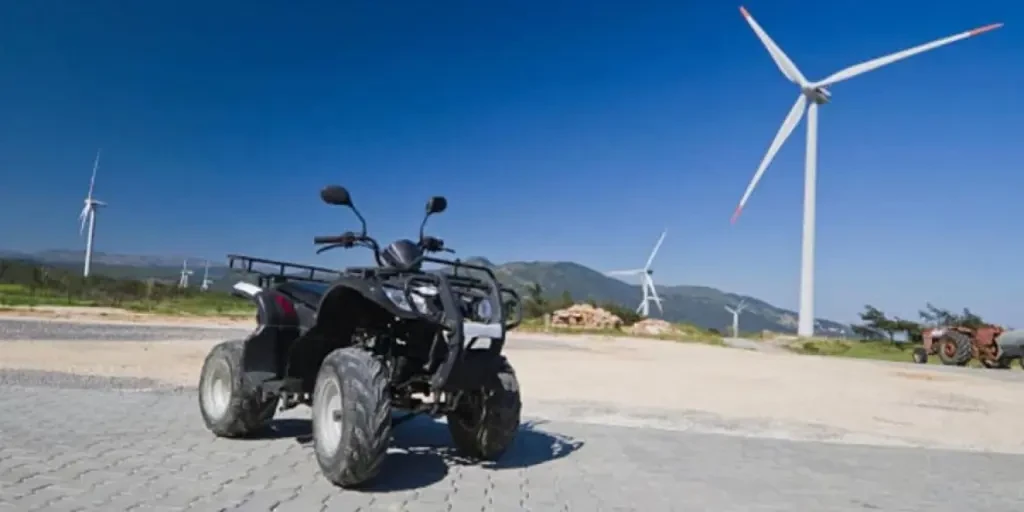Índice del contenido
1. Introducción
2. Tipos de vehículos todo terreno eléctricos y sus aplicaciones
3. Panorama del mercado en 2024: tendencias y perspectivas
4. Consideraciones clave para seleccionar un ATV eléctrico
5. Los mejores vehículos todoterreno eléctricos de 2024: un análisis comparativo
6. Conclusión
Introducción
Los vehículos todo terreno eléctricos han ganado popularidad y se han convertido en la opción preferida para una amplia gama de aplicaciones, desde la conducción recreativa hasta el trabajo pesado. Estos vehículos ofrecen una alternativa más limpia y silenciosa a los vehículos todo terreno tradicionales a gasolina, a la vez que ofrecen una potencia y un rendimiento impresionantes. Con los avances en la tecnología de baterías y motores eléctricos, los vehículos todo terreno eléctricos actuales pueden afrontar terrenos difíciles, transportar cargas importantes y proporcionar tiempos de conducción prolongados sin el ruido y las emisiones de sus predecesores. A medida que el mercado continúa evolucionando, los vehículos todo terreno eléctricos se destacan como una opción versátil y sostenible para quienes buscan soluciones eficientes y ecológicas para el trabajo y el ocio.
Tipos de vehículos todo terreno eléctricos y sus aplicaciones

Vehículos todo terreno eléctricos para jóvenes
Los vehículos todo terreno eléctricos para jóvenes están diseñados específicamente para conductores más jóvenes, generalmente de entre 6 y 14 años. Estos vehículos todo terreno priorizan la seguridad con características como limitadores de aceleración, que controlan la velocidad, y sistemas de estabilidad mejorados para reducir el riesgo de vuelco. Por lo general, cuentan con motores más pequeños y menos potentes, que proporcionan velocidades más bajas que son apropiadas para principiantes. Por ejemplo, modelos como el Yamaha Raptor 90 ofrecen una combinación equilibrada de seguridad y rendimiento, lo que los convierte en una opción popular para conductores principiantes. Los vehículos todo terreno para jóvenes suelen ser el primer paso para los jóvenes entusiastas, ya que les brindan la oportunidad de aprender habilidades básicas de conducción en un entorno controlado y seguro.
Vehículos todo terreno eléctricos utilitarios
Los vehículos todo terreno eléctricos utilitarios son los caballos de batalla del mundo de los vehículos todo terreno. Están diseñados para tareas que requieren potencia y durabilidad, como la agricultura, el transporte y otros trabajos pesados. Estos vehículos todo terreno están construidos con bastidores resistentes, motores de alto par y, a menudo, cuentan con grandes portaequipajes o capacidades de remolque. Se utilizan comúnmente en la agricultura, la ganadería y la construcción debido a su capacidad para desplazarse por terrenos difíciles mientras transportan o remolcan cargas importantes. El Polaris Ranger EV, por ejemplo, es un vehículo todo terreno utilitario conocido por su impresionante capacidad de remolque y su funcionamiento silencioso, lo que lo hace adecuado tanto para el trabajo como para áreas sensibles desde el punto de vista medioambiental.
Vehículos todo terreno eléctricos recreativos
Los vehículos todo terreno eléctricos recreativos están diseñados teniendo en cuenta el rendimiento, para satisfacer las necesidades de los entusiastas que buscan velocidad y agilidad para las aventuras todoterreno. Estos modelos están equipados con potentes motores y sistemas de suspensión avanzados para manejar una variedad de terrenos, desde senderos fangosos hasta paisajes rocosos. La velocidad y el manejo son características clave, lo que hace que estos vehículos todo terreno sean ideales para la conducción deportiva. Modelos como el DRR EV Lightning, con su alta velocidad máxima y aceleración rápida, son ejemplos perfectos de vehículos todo terreno recreativos que combinan diversión con funcionalidad. Estos vehículos todo terreno suelen ser los preferidos por los amantes de las emociones fuertes que buscan una alternativa ecológica a las máquinas tradicionales a gasolina.
Vehículos todo terreno híbridos eléctricos
Los vehículos todoterreno híbridos eléctricos ofrecen una solución versátil que combina características de los modelos utilitarios y recreativos. Estos vehículos todoterreno están diseñados para ser adaptables, capaces de realizar tareas pesadas y proporcionar un paseo agradable para actividades de ocio. A menudo cuentan con configuraciones ajustables que permiten al conductor cambiar entre los modos de trabajo y deportivo, lo que los hace ideales para usuarios que requieren un vehículo multipropósito. El Kuberg Volt es un ejemplo de un vehículo todoterreno híbrido que ofrece potencia y flexibilidad, y está dirigido a quienes necesitan un vehículo todoterreno que pueda pasar sin problemas de ser una herramienta de trabajo a un vehículo recreativo.
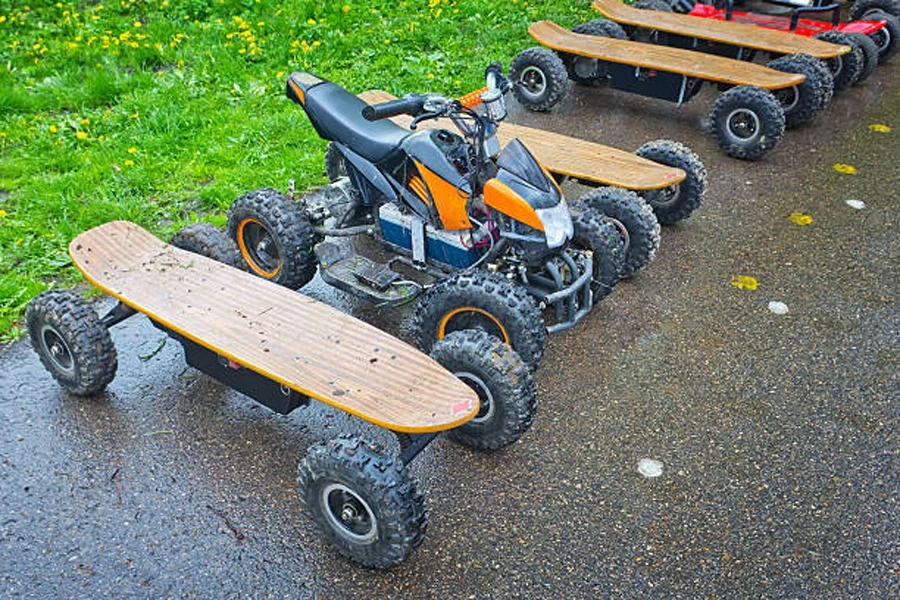
Panorama del mercado en 2024: tendencias y perspectivas
Crecimiento del mercado y preferencias de los consumidores
El mercado de vehículos todo terreno eléctricos está experimentando un sólido crecimiento, impulsado por la creciente demanda de alternativas ecológicas y de bajo mantenimiento a los vehículos tradicionales a gasolina. El tamaño del mercado de vehículos todo terreno eléctricos (ATV) se valoró en USD 27.9 millones en 2023 y se prevé que registre una CAGR de más del 17% entre 2024 y 2032. Este crecimiento se debe principalmente a la creciente popularidad de las actividades recreativas al aire libre y a la creciente conciencia de la conservación del medio ambiente. Los consumidores optan cada vez más por los vehículos todo terreno eléctricos debido a su funcionamiento más silencioso y a sus emisiones reducidas, lo que los hace más adecuados para su uso en áreas sensibles al ruido y protegidas del medio ambiente.
Innovaciones tecnológicas
Los avances tecnológicos están desempeñando un papel crucial en la evolución de los ATV eléctricos, mejorando su rendimiento y ampliando su atractivo. Las mejoras en la tecnología de baterías, en particular el desarrollo de baterías de iones de litio de alta capacidad, han ampliado significativamente la autonomía y la eficiencia de estos vehículos. Las capacidades de carga rápida también han reducido el tiempo de inactividad, lo que hace que los ATV eléctricos sean más prácticos para un uso continuo. Además, las innovaciones en el diseño de motores han dado lugar a mayores salidas de par y una mejor gestión de la energía, lo que permite que los ATV eléctricos funcionen bien incluso en terrenos difíciles. Otra área clave de innovación es la integración de tecnologías inteligentes. Muchos ATV eléctricos modernos ahora vienen equipados con funciones como navegación GPS, conectividad Bluetooth y sistemas de suspensión avanzados, que mejoran tanto la experiencia del usuario como la seguridad.
Marcas líderes y cuota de mercado
El mercado de los vehículos todo terreno eléctricos está dominado por varios actores clave, cada uno de los cuales se esfuerza por obtener una ventaja competitiva a través de la innovación y el posicionamiento estratégico. Polaris, Yamaha y Honda se encuentran entre los fabricantes líderes, cada uno de los cuales ofrece una gama de vehículos todo terreno eléctricos diseñados para diferentes aplicaciones, desde uso recreativo hasta tareas industriales pesadas. Polaris, por ejemplo, sigue liderando el mercado con modelos como el Ranger EV, que combina un rendimiento robusto con un funcionamiento respetuoso con el medio ambiente.
Yamaha y Honda también son actores importantes: Yamaha se centra en modelos versátiles que satisfacen tanto a los conductores más jóvenes como a los adultos, mientras que Honda está ampliando su oferta en los segmentos de vehículos utilitarios y deportivos. Además, los nuevos participantes y los fabricantes más pequeños están ganando cada vez más participación en el mercado al presentar modelos especializados que satisfacen demandas específicas, como vehículos todo terreno eléctricos diseñados para condiciones todoterreno extremas o para aplicaciones comerciales específicas.

Consideraciones clave para seleccionar un ATV eléctrico
Duración de la batería y tiempo de carga
Al seleccionar un ATV eléctrico, la duración de la batería es uno de los factores más importantes a tener en cuenta. La longevidad de la batería determina la distancia que puede recorrer el ATV con una sola carga, lo que la hace esencial para quienes planean viajes prolongados o usan el vehículo para trabajos que requieren cubrir distancias significativas. Las baterías de iones de litio generalmente se prefieren debido a su mayor densidad de energía y ciclos de vida más largos en comparación con otros tipos. Modelos como el Daymak Beast ATV Ultimate ofrecen una autonomía impresionante de hasta 225 millas, gracias a su configuración de batería avanzada. Las capacidades de carga eficientes también son vitales, ya que minimizan el tiempo de inactividad entre viajes. Las opciones de carga rápida pueden reducir significativamente el tiempo necesario para recargar el ATV, lo que permite un uso más continuo.
Potencia y velocidad del motor
La potencia del motor y la velocidad máxima del ATV son indicadores clave de rendimiento que influyen en la capacidad del vehículo para afrontar diversos terrenos y tareas. Los motores de alto par son especialmente beneficiosos para entornos todoterreno y accidentados, ya que proporcionan la potencia necesaria para sortear pendientes pronunciadas y condiciones difíciles. Por ejemplo, el ATV DRR EV Lightning, equipado con un motor de 21.5 CV, puede alcanzar velocidades de hasta 40 km/h, lo que lo hace adecuado tanto para fines recreativos como laborales. El equilibrio entre potencia y velocidad debe estar en consonancia con el uso previsto, ya sea para tareas pesadas, que pueden requerir más potencia, o para conducción deportiva, donde la velocidad es más importante.
Peso, tamaño y capacidad de carga
Las dimensiones físicas y la capacidad de carga de un ATV eléctrico afectan directamente su usabilidad y rendimiento. Los modelos más pesados suelen proporcionar una mejor estabilidad y son más adecuados para transportar grandes cargas o remolcar, lo que los hace ideales para aplicaciones agrícolas o industriales. El Polaris Ranger XP Kinetic, por ejemplo, está diseñado con una capacidad de remolque de 2,500 libras, lo que lo convierte en un fuerte candidato para tareas que implican mover materiales pesados. Por el contrario, los ATV más livianos pueden ofrecer una mejor maniobrabilidad y, a menudo, se prefieren para uso recreativo donde la agilidad es una prioridad. La capacidad de carga también debe considerarse en relación con el caso de uso típico, ya sea para transportar carga o equipo.
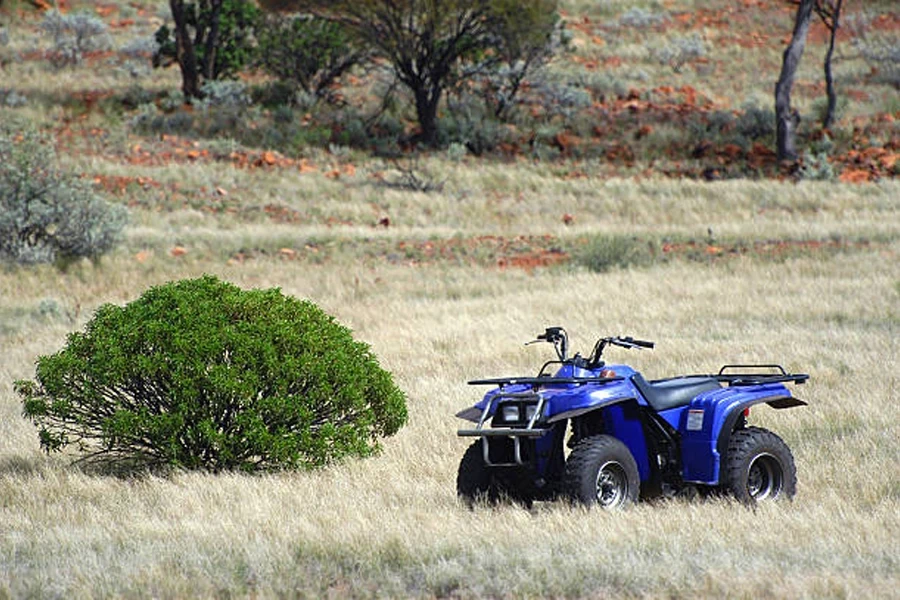
Caracteristicas de seguridad
La seguridad es una consideración primordial, especialmente para los vehículos todo terreno eléctricos que se utilizarán en entornos difíciles o impredecibles. Los componentes de seguridad esenciales incluyen sistemas de frenado confiables, suspensión avanzada y limitadores de aceleración, que ayudan a controlar la velocidad y prevenir accidentes. Los sistemas de frenado regenerativo, como los que se encuentran en algunos modelos de alta gama, brindan no solo seguridad sino también eficiencia energética al convertir la energía de frenado en energía de la batería. Además, los sistemas de suspensión ajustables mejoran el manejo y la comodidad, lo que reduce el riesgo de accidentes en terrenos irregulares. Asegurarse de que el vehículo todo terreno esté equipado con características de seguridad sólidas es crucial tanto para los conductores principiantes como para los experimentados.
Precio frente a valor
Por último, evaluar el precio frente al valor que ofrece el ATV eléctrico es esencial para tomar una decisión de compra informada. Si bien los ATV eléctricos pueden ser más caros al principio que sus contrapartes a gasolina, a menudo ofrecen ahorros a largo plazo a través de menores costos de mantenimiento y eficiencia energética. Es importante sopesar las características y capacidades de cada modelo frente a su precio. Por ejemplo, modelos como el Razor Dirt Quad ofrecen una opción económica con características básicas adecuadas para un uso recreativo ligero, mientras que los modelos premium como el Eco Charger Lithium Prestige brindan capacidades avanzadas para quienes requieren un rendimiento más sólido. Evaluar la rentabilidad de un ATV implica considerar no solo el precio de compra inicial, sino también los beneficios y ahorros a largo plazo.
Los mejores vehículos todoterreno eléctricos de 2024: un análisis comparativo
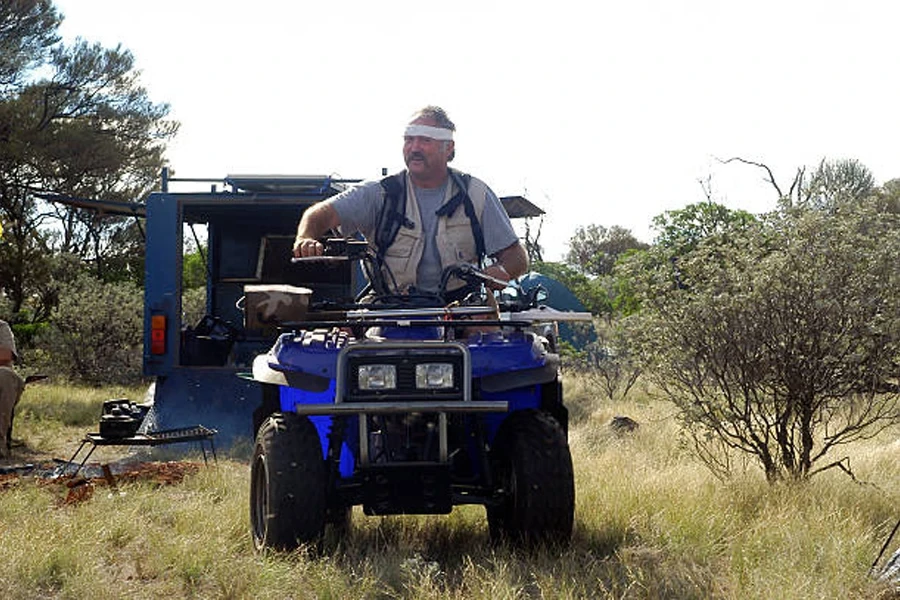
Yamaha Raptor 90
El Yamaha Raptor 90 es una excelente opción para los conductores más jóvenes, ya que ofrece un equilibrio entre seguridad y rendimiento. Está diseñado para conductores de 10 años o más y cuenta con un motor eléctrico de 90 cc que ofrece una potencia suave con una velocidad máxima de 10 mph. El Raptor 90 está equipado con características de seguridad esenciales, incluido un limitador de aceleración y una transmisión automática, lo que lo hace ideal para principiantes. Su marco liviano y su fácil manejo lo convierten en un excelente ATV de nivel de entrada para niños que hacen la transición a modelos más potentes a medida que ganan experiencia.
Can-Am Outlander 6 × 6
El Can-Am Outlander 6×6 es un vehículo potente diseñado para aplicaciones de servicio pesado, lo que lo convierte en una opción destacada para tareas utilitarias. Este modelo está equipado con un motor eléctrico de 48 voltios y una transmisión 6×6 robusta, que proporciona una tracción y estabilidad excepcionales en terrenos difíciles. El Outlander 6×6 es capaz de remolcar hasta 1,650 libras, lo que lo hace perfecto para tareas que requieren capacidades de transporte serias. Su durabilidad y potencia lo convierten en una opción preferida tanto para uso profesional como recreativo, especialmente en entornos todoterreno donde la confiabilidad y la resistencia son primordiales.
Polaris Ranger EV
El Polaris Ranger EV se destaca en el segmento de vehículos utilitarios por su impresionante combinación de potencia, autonomía y versatilidad. Cuenta con una batería de 29.8 kWh en su versión Ultimate, que proporciona una autonomía de hasta 90 millas con una sola carga. El Ranger EV ofrece 110 caballos de fuerza y 140 lb-ft de torque, lo que lo convierte en uno de los vehículos todo terreno eléctricos más potentes disponibles. Su funcionamiento silencioso y su torque a bajas revoluciones lo hacen ideal tanto para tareas utilitarias como para uso recreativo, particularmente en entornos donde los niveles de ruido deben minimizarse. El Ranger EV también está equipado con características avanzadas como tracción en las cuatro ruedas y una plataforma de carga de alta capacidad, lo que mejora su funcionalidad para una amplia gama de aplicaciones.
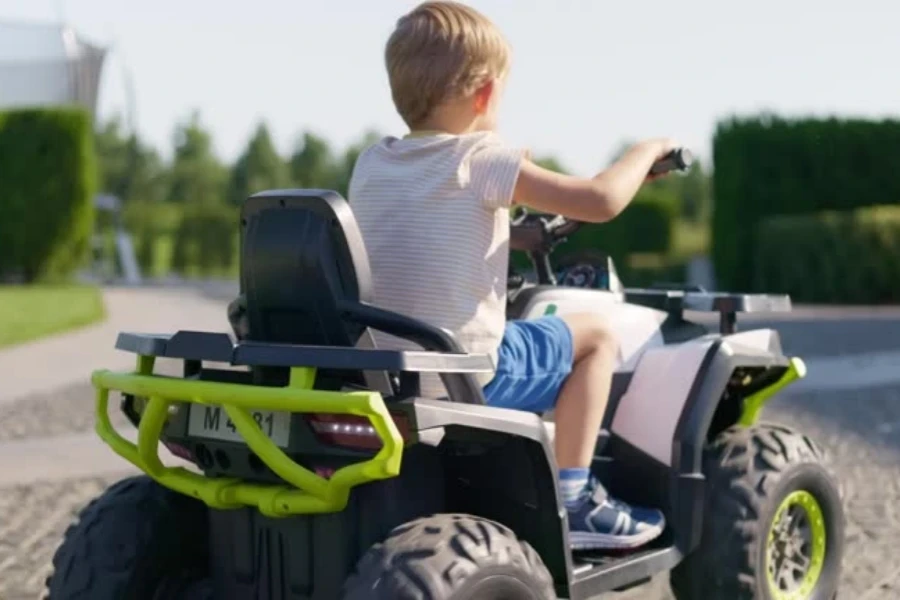
Blazer Apolo 9
El Apollo Blazer 9 está diseñado para conductores de nivel medio que buscan un equilibrio entre potencia, velocidad y asequibilidad. Este modelo está impulsado por un motor eléctrico de 125 cc, que ofrece una velocidad máxima de 28 mph. El Blazer 9 está equipado con frenos de disco y un sistema de suspensión resistente, lo que proporciona un manejo y control confiables en varios terrenos. Su versatilidad lo hace adecuado tanto para conducción recreativa como para trabajos utilitarios livianos, lo que atrae a los conductores que necesitan un ATV capaz y confiable sin gastar una fortuna.
Voltio de Kuberg
El Kuberg Volt es una oferta única en el mercado de vehículos todo terreno eléctricos, diseñado específicamente para los entusiastas más jóvenes. Cuenta con un motor eléctrico de 48 V y está diseñado teniendo en cuenta la seguridad, incluido un limitador de aceleración y frenos de disco hidráulicos. El Volt es capaz de alcanzar velocidades de hasta 28 mph, lo que lo convierte en una opción emocionante y segura para conductores jóvenes de seis años en adelante. Su marco de aluminio liviano y la suspensión ajustable garantizan un andar suave incluso en terrenos irregulares, lo que lo convierte en una excelente opción para familias que buscan introducir a sus hijos en aventuras todoterreno de una manera controlada y segura.
Conclusión
Para elegir el mejor ATV eléctrico en 2024 es necesario tener en cuenta detenidamente diversos factores, como la duración de la batería, la potencia del motor, las características de seguridad y las necesidades específicas del conductor. Ya sea que elija un modelo para conductores jóvenes, para trabajos pesados o para uso recreativo, comprender los atributos únicos de cada ATV puede ayudar a garantizar que el vehículo seleccionado cumpla con los estándares de rendimiento y seguridad requeridos. A medida que la tecnología continúa evolucionando, los ATV eléctricos se vuelven cada vez más versátiles y ofrecen más opciones para adaptarse a una amplia gama de aplicaciones y preferencias.
